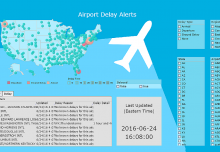New software adoption is not a field of dreams. If you build it, your employees won’t necessarily come. They’re busy. They’re comfortable with where they are. They don’t see the value-add. They don’t know how to use it. And they certainly don’t have the time (or desire to learn).
The challenge of employee software adoption can be hugely frustrating to the implementation team and company leadership. You have a new tool that cost a lot of money, which is wasted if the tool goes unused. Perhaps even more upsetting is that you know how helpful this tool could be. The data available in your business intelligence software could improve the way every single person and team at your company operates. Seeing it overlooked feels like standing on a goldmine with neon arrows pointed at it, while everyone in sight digs feverishly in a different hole.
The solution for increasing BI software adoption is to switch your perspective from the old Field of Dreams quote to this one: If they experience it, they will stay.
What are Self-Service Analytics
Self-service BI tools allow users without an IT or statistical background to request, access, and create reports on corporate data, without the need for support from expert team members. These tools are useful because they give team members data access without waiting in an IT queue, and eliminate some of the back-and-forth necessary in traditional reporting. Self-service analytics are also critical to getting team members to buy-in to your BI software.
The Importance of Proof
Think about the last time you, a family member, or a pet was sick and had to go to the doctor or vet. Chances are that you were either typing the symptoms into Google before the visit, or consulting WebMD on the doctor’s diagnosis after you got home.
The internet has turned all of us into fact checkers, seeking proof to back up or break down what we think we know or what we hear. As much as you could tell your team members that BI software will be useful for their day-to-day work and long-term strategic planning, they need to check the facts themselves. Without self-serve analytics, this process becomes more difficult. They have to go through an IT person or analyst, and the waiting period (as well as any miscommunications about needs) will raise skeptic’s alarms. With self-serve analytics, team members can try before they buy-in.
Culture Shift
Data-driven is a term that’s thrown around plenty these days. But it’s companies who truly live into the term as a core operating value that will rise above the competition. However, for your wider team, it’s difficult to adopt that core value when the data seems distant. Everyone needs to be able to access and analyze data in order to really live into the data-driven directive. By using self-service analytics, that culture shift can occur throughout your entire organization.
Act Fast
The key to successful use of business intelligence data is timeliness. All the information in the world won’t mean a thing if you get it too late to act upon it. That’s one of the risks posed by traditional BI software. A small team of expert users is required to run any requested report, and the queue can easily get backed up. If your employees are getting their reports well after their usefulness expiration date, they aren’t going to see the value-add of the software.
With self-serve analytics, the onus to get reports in a timely manner is on every individual employee. Those who take advantage of their access will quickly see it’s usefulness. And those early adopters will spread the word to other employees. Buy-in will gain momentum.
Free Up Your Analysts
Self service or no, your business analysts are going to be the super users of your BI software. Their adoption and evangelism of the product is essential to spreading it to the rest of the team. With traditional BI tools, your analysts are going to spend a lot of their bandwidth running and sending reports. This is not the best use of their time and talents. Since self-serve analytics makes it possible for anyone to run a report, freeing your analysts up to do the higher-level work of data analysis. They’ll be happy and more productive.
The use of data to drive business decisions can be the difference between companies that stagnate and those that sail past the competition. BI software can make it easy to find and analyze that data, but only if the software is used. By employing a self-serve analytics approach, you’ll get more team members on board, faster and start putting data to work for you ASAP.
——
Taylor Burke is a contributor for TechnologyAdvice.com, cover business and marketing software. When she’s not in front of her screen, you can find Taylor reading, cooking, running, or hanging with her dog—but rarely all four at once. Connect with her on LinkedIn.





